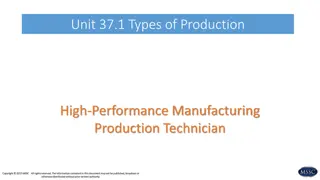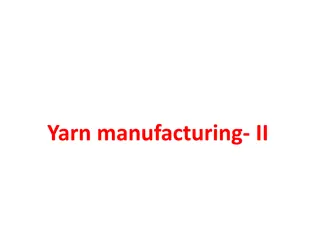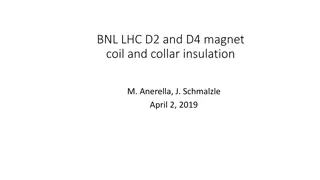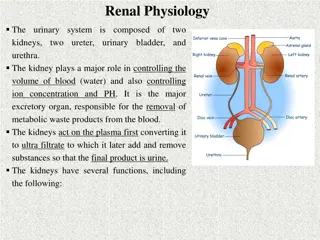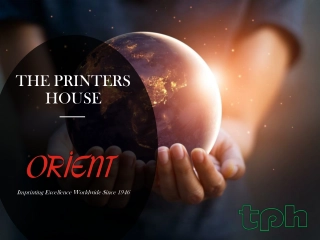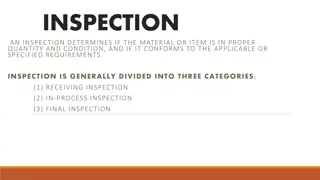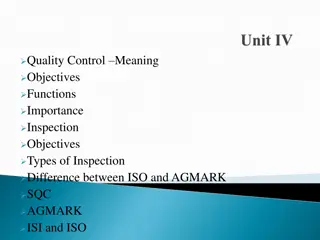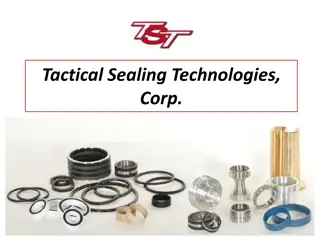The Role of Quality Control in Tubular Heater Manufacturing Success
Tubular heaters are essential components in various industries, from domestic appliances to industrial machinery. Ensuring their reliability and efficiency is paramount for manufacturers, making quality control techniques crucial. This comprehensive guide delves into the various quality control methods that tubular heater manufacturers employ to maintain the highest standards.n
- #QualityControl
- #Tubular Heater Manufacturers
- #HeatingElements
- #ManufacturingStandards
- #IndustrialHeaters
- #PerformanceTesting
- #InsulationResistance
- #HighVoltageTesting
- #ThermalCycling
- #EnvironmentalTesting
Download Presentation

Please find below an Image/Link to download the presentation.
The content on the website is provided AS IS for your information and personal use only. It may not be sold, licensed, or shared on other websites without obtaining consent from the author. Download presentation by click this link. If you encounter any issues during the download, it is possible that the publisher has removed the file from their server.
E N D
Presentation Transcript
QUALITY CONTROL TECHNIQUES FOR TUBULAR HEATER MANUFACTURERS!
Tubular heaters are essential components in various industries, ranging from domestic appliances to industrial machinery. Ensuring the reliability and efficiency of these heaters is paramount for manufacturers. This is where quality control techniques come into play. In this comprehensive guide, we'll delve into the various quality control methods that tubular heater manufacturers employ to maintain the highest standards.
INTRODUCTION TO TUBULAR HEATERS What are Tubular Heaters? Tubular heaters are versatile heating elements used to heat air, liquids, and surfaces. They are commonly found in household appliances such as ovens and water heaters, as well as in industrial applications like process heating and packaging equipment. These heaters consist of a metal sheath with a heating element inside, offering durability and efficient heat transfer. Importance of Quality in Tubular Heaters The performance and safety of tubular heaters depend heavily on their quality. Poorly manufactured heaters can lead to equipment failure, increased energy consumption, and even safety hazards. Therefore, it is crucial for tubular heater manufacturers to implement stringent quality control measures.
KEY QUALITY CONTROL TECHNIQUES 1. Material Inspection The foundation of a high-quality tubular heater lies in the materials used. Manufacturers start by thoroughly inspecting raw materials, such as the metal sheath and heating element wire. This inspection ensures that the materials meet the required specifications and standards. Importance of Material Quality Using substandard materials can result in premature failure of the heater. High-quality materials, on the other hand, enhance the durability and performance of the heater, ensuring long-term reliability. 2. Dimensional Verification Dimensional accuracy is critical in the manufacturing of tubular heaters. Manufacturers use precise measuring tools to verify the dimensions of each component, ensuring they conform to the design specifications. This step is vital for proper fitting and efficient operation of the heater.
TOOLS USED FOR DIMENSIONAL VERIFICATION Calipers Micrometers Coordinate Measuring Machines (CMMs) 3. Resistance Testing Resistance testing is performed to check the electrical resistance of the heating element. This test ensures that the heater will operate efficiently and safely. The resistance value must fall within a specific range to ensure proper heating performance. How Resistance Testing is Conducted Manufacturers apply a known voltage to the heating element and measure the resulting current. The resistance is then calculated using Ohm's Law (Resistance = Voltage / Current).
4. Insulation Resistance Testing Insulation resistance testing is crucial for ensuring the safety and reliability of tubular heaters. This test measures the resistance between the heating element and the metal sheath, ensuring there is no leakage current that could cause a short circuit or electrical shock. Importance of Insulation Resistance Adequate insulation resistance prevents electrical failures and ensures the safe operation of the heater, especially in applications involving moisture or corrosive environments. 5. High Voltage Testing (Dielectric Strength Test) High voltage testing, also known as dielectric strength testing, involves applying a high voltage to the heater to ensure its insulation can withstand electrical stress. This test helps identify potential insulation weaknesses that could lead to electrical breakdowns. Conducting High Voltage Testing Manufacturers apply a voltage higher than the operating voltage to the heater for a specified duration. The heater must withstand this voltage without any breakdown to pass the test.
CONCLUSION Implementing robust quality control techniques is essential for tubular heater manufacturers to ensure their products meet the highest standards of performance and safety. From material inspection to advanced technologies like AI, each step in the quality control process plays a crucial role in delivering reliable and efficient heaters. By adhering to industry standards and continuously improving quality control measures, manufacturers can achieve long-term success and customer satisfaction. Source Blog :- https://medium.com/@heaterssensors/quality -control-techniques-for-tubular-heater- manufacturers-quality-85ea2a467d90













